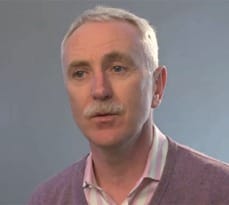A new analysis reveals Keynes extraordinary returns hinged on a radical switch he made from being a ‘top down’ macro manager to a ‘bottom up’ stock picker
[vimeo id=40446286]
Idiosyncratic portfolios and an unconventional approach are two of the findings in the first detailed analysis of John Maynard Keynes’ investment philosophy, strategies and trading records.
Dr David Chambers, Lecturer in Finance at Cambridge Judge Business School, who co-authored the study ‘Keynes the Stock Market Investor’ with Professor Elroy Dimson, says the economist made a major contribution to the development of professional asset management.
It is the first detailed evaluation of Keynes approach since his death in 1946 viewed in the context of his management of the King’s College, Cambridge, endowment.
“The popular consensus to have grown up around Keynes is that he was a fantastic investor. Whilst we have not exploded that story our overall conclusion is that he performed very well for his College but it is a more nuanced story than this popular view suggests.”
Dr Chambers adds that Keynes struggled in the late 1920s with his favoured ‘top-down’ style of investing.
“He thought that as an economist and someone who was a big consumer of economic and industrial statistics that he could predict the business cycle effectively and therefore would know when to be in the stock market and when to come out.”
Failure to spot sharp decline in the London market along with Wall Street in 1929, the onset of the Great Depression in the United States, disappointed Keynes, but in the early 1930s he completely switched from his top-down method to a bottom-up approach as practiced by the likes of Warren Buffett.
“Keynes, like Buffett, would pick those companies he really liked, those stocks that he really liked. He called them his ‘pets’, which he would hold onto through thick and thin, through the ups and downs of the market. That is what served him so well through the 1930s to his death in 1946.”
Dr Chambers says Keynes had the trust of his fellows at King’s College and an organisational set-up which was conducive to the way he was running money. Lessons relevant to today can be taken from Keynes including the merit from his approach during the second half of his investment career.
Dr Chambers feels that if Keynes was alive today he would concerned about the lack of demand from consumers and firms in terms of investing. The economist would be focused on ways to stimulate aggregate demand in order to get the economy moving.
“The other thing that would have deeply concerned him would be the behaviour of some financial institutions in the last financial crisis. Keynes had quite a high moral view of the way this business should be conducted and in many ways he regarded investment as what he called a very ‘low pursuit’. I think he would have been somewhat appalled at some of the things have taken place.”
Keynes’ advice to George Osborne in the current economic climate might have been, adds Dr Chambers, do not just think about balancing the books but look to stimulate the economy in the next couple of years.
“Do it in ways that are not going to compromise our ability to still pursue this path of fiscal rectitude in the medium term, but really think about innovative ways that you can get people spending money and companies investing.”


